Sometimes you may find yourself in a situation where you need a tomato paste substitute. Perhaps you’ve run out of tomato paste, or you’re looking for a healthier or more convenient option. Tomato paste is a common ingredient used in many recipes, from sauces and stews to soups and casseroles. However, there may be instances when you run out of tomato paste or cannot find it in your local grocery store.
In such cases, having a tomato paste substitute can save the day and ensure that your recipe turns out just as delicious. This article will explore the best tomato paste substitutes, how to use them, and provide tips and tricks to help you choose the right one for your dish.
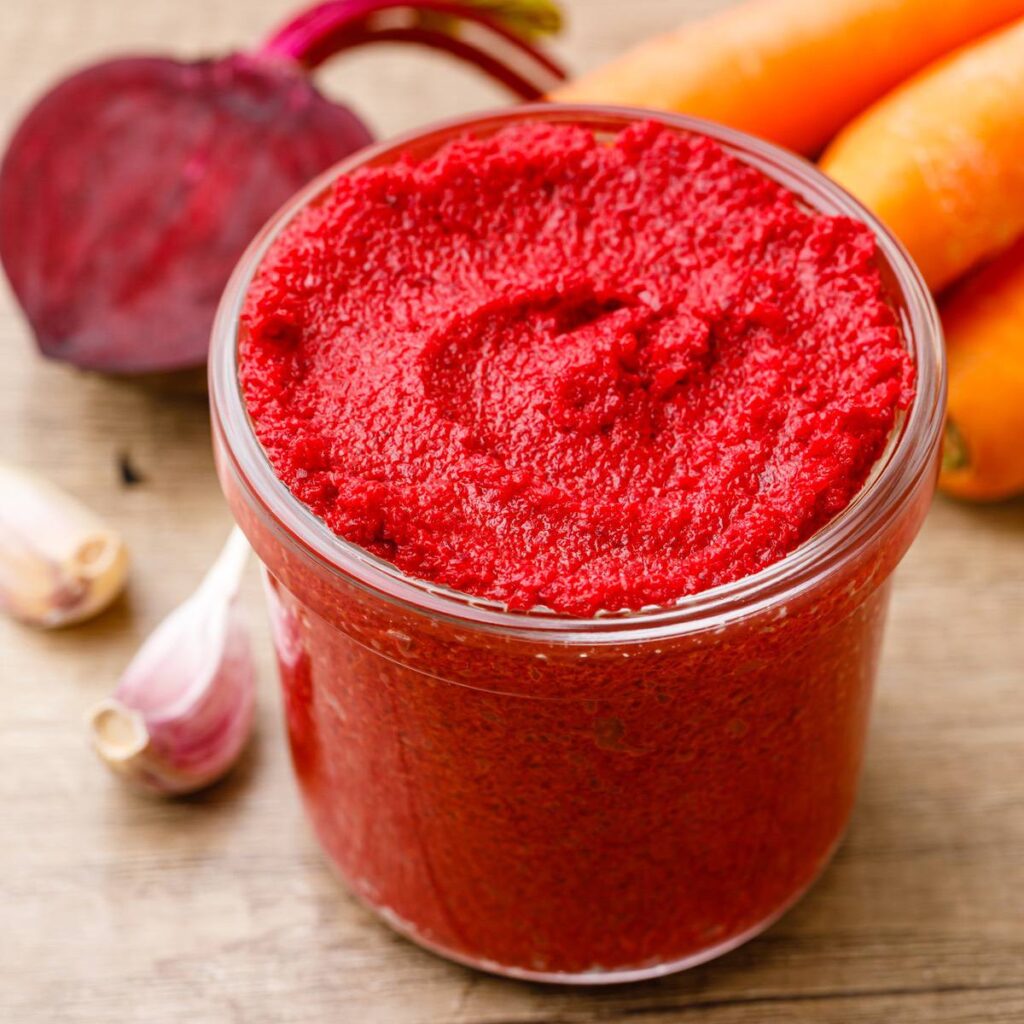
SEE ALSO:
Why you need a Tomato Paste Substitute
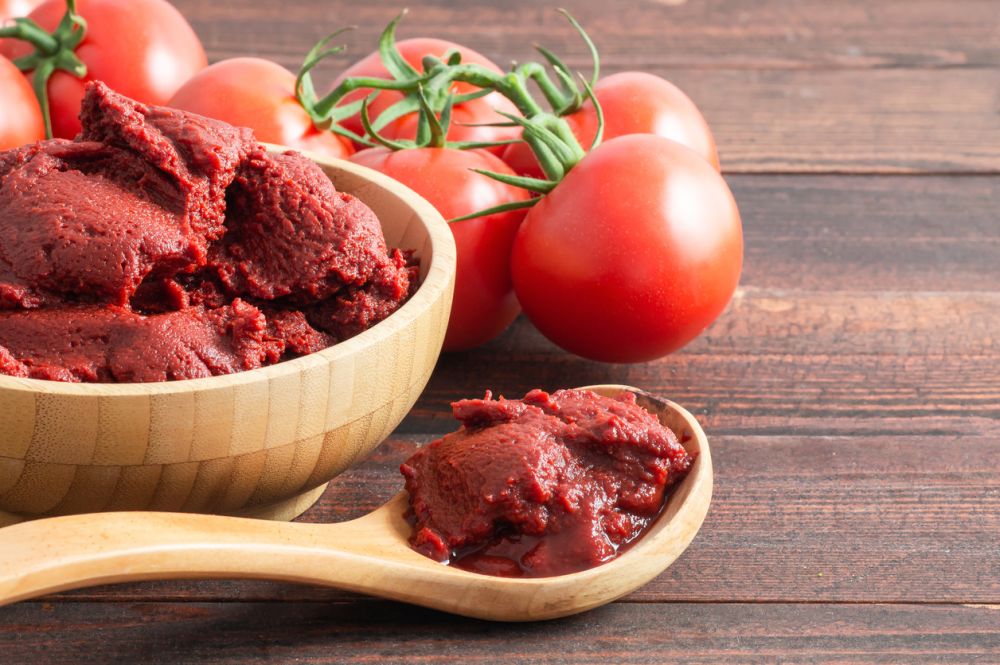
There are several reasons why you may need a tomato paste substitute in your cooking:
1. You don’t have tomato paste on hand
You may find yourself in a situation where you don’t have any tomato paste in your pantry and need to find an alternative ingredient to use.
2. Allergies or dietary restrictions
Some people may have allergies or dietary restrictions that prevent them from using tomato paste in their cooking.
3. Flavour preference
While tomato paste has a rich, concentrated tomato flavour, some people may prefer a different flavour profile in their dishes.
4. Cost
Depending on where you live, tomato paste may be expensive or hard to find, and a substitute may be a more affordable option.
Whatever your reason may be, several alternatives can be used as a substitute for tomato paste.
Tomato Paste Substitute Options
If you need a tomato paste substitute, there are several options you can consider. Here are some of the best tomato paste substitute options:
1. Tomato Sauce
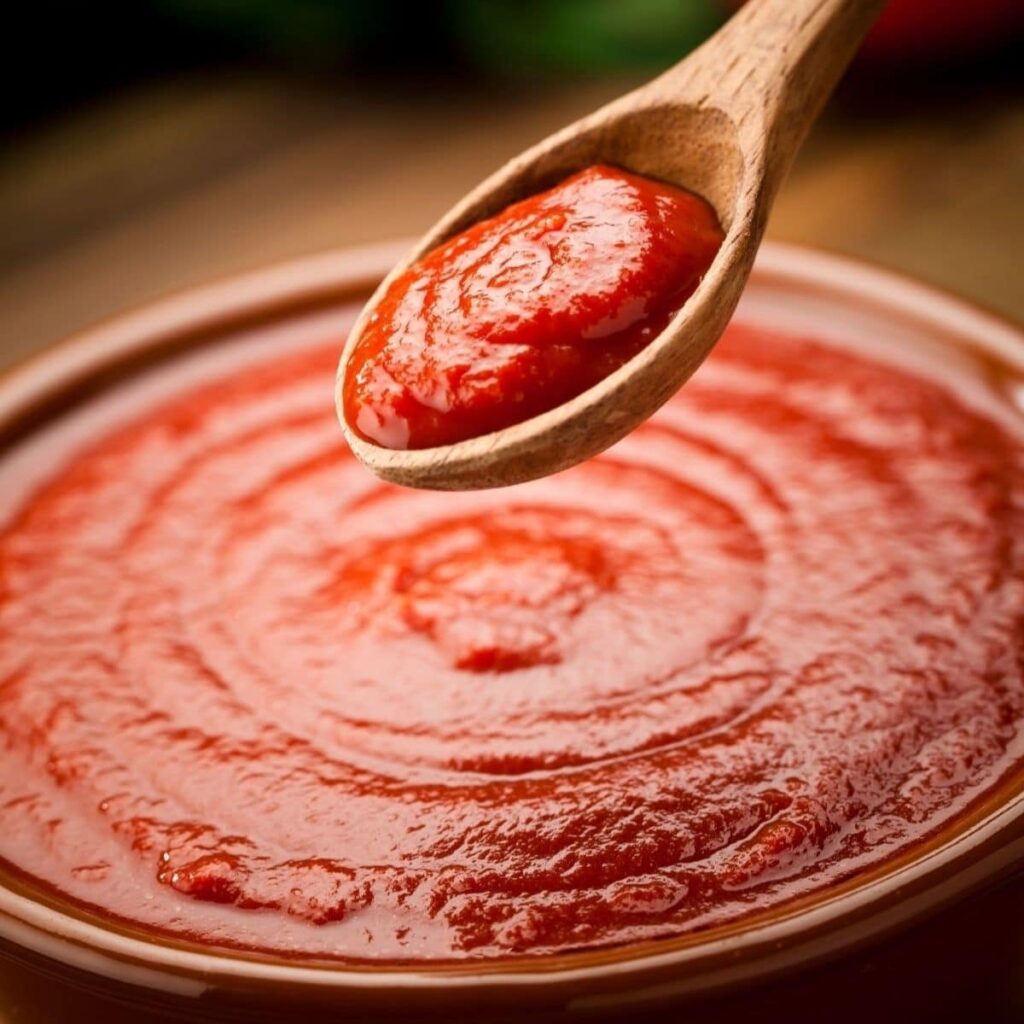
Tomato sauce is one of the best substitutes for tomato paste. It has a similar consistency and flavour and can be used in almost any recipe that calls for tomato paste. The main ingredients in both are unsweetened crushed tomatoes. For tomato paste, these are reduced by boiling until they thicken. The substitute produces a more robust, acidic flavour and a naturally sweet taste.
However, keep in mind that tomato sauce is less concentrated than tomato paste if you substitute tomato paste with tomato sauce, you should double the quantity in the recipe, so use two tablespoons of tomato sauce for one tablespoon of tomato paste.
It’s important to keep note Because you are doubling the quantity of a liquid ingredient, you should also even out the recipe and remove one tablespoon of another liquid element, so you don’t end up with a mushy dish.
2. Crushed Tomatoes
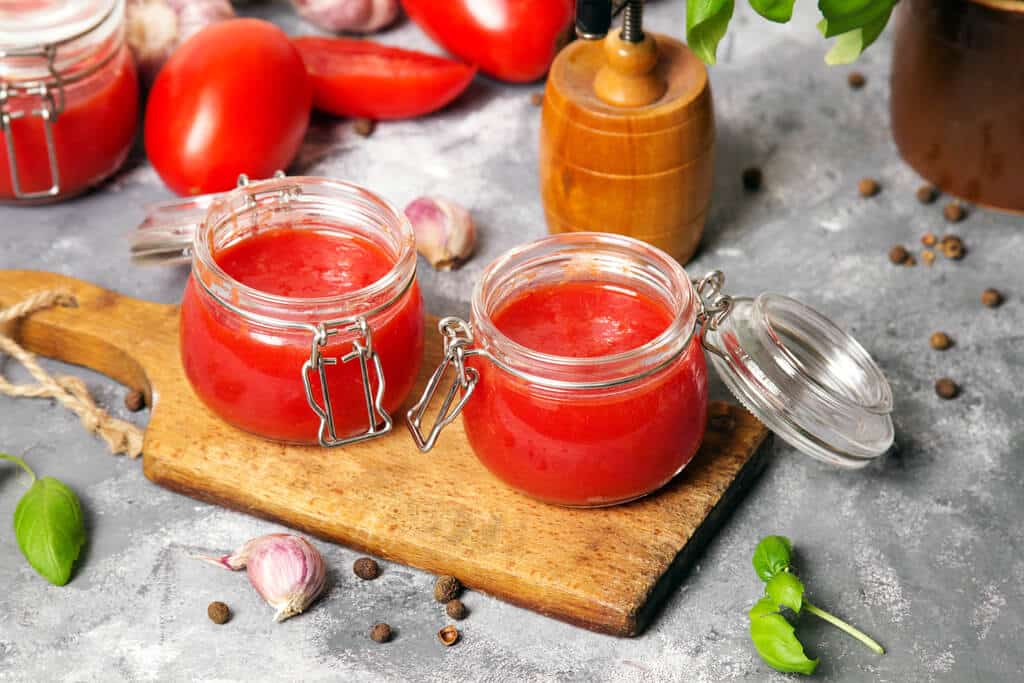
Crushed tomatoes are another good substitute for tomato paste. They are less concentrated than tomato paste, but they still have a rich tomato flavour. You may need to cook the crushed tomatoes for a bit longer to thicken them up, but they can be used in most recipes that call for tomato paste.
3. Tomato Puree
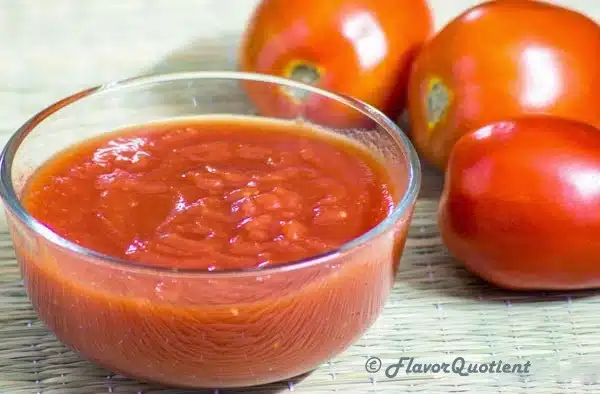
Tomato purée is a product made with just one main ingredient, crushed tomatoes. It is thinner than tomato sauce and tomato paste.
Tomato puree is similar to the taste of tomato paste, so your dish will have the same level of acidity and sweetness but with a thicker consistency. It is a good substitute for tomato paste in recipes that require a thicker texture.
When using tomato purée to substitute tomato paste, add twice the amount. The only difference could result from consistency, but mixing the purée with the other ingredients (while halving the liquids) should resolve it.
4. Tomato Passata
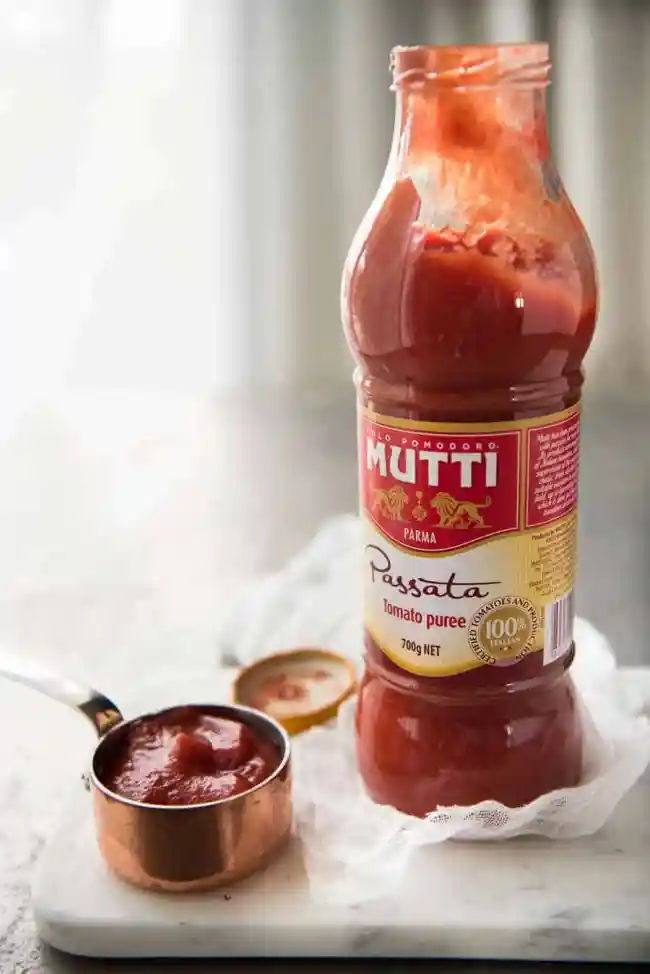
Tomato passata is a true staple of Italian cooking. Lighter than tomato paste, passata is a tomato purée that has not been reduced by stewing. Passata appears in many recipes, either as such or as a tomato paste substitute.
To substitute tomato paste with passata, you should triple the required amount. For example, if the recipe calls for one tablespoon of tomato paste, you should use three tablespoons of tomato passata. If the additional liquid affects the texture of your dish, spend a few minutes simmering the passata before adding it to your recipe.
5. Canned Tomato
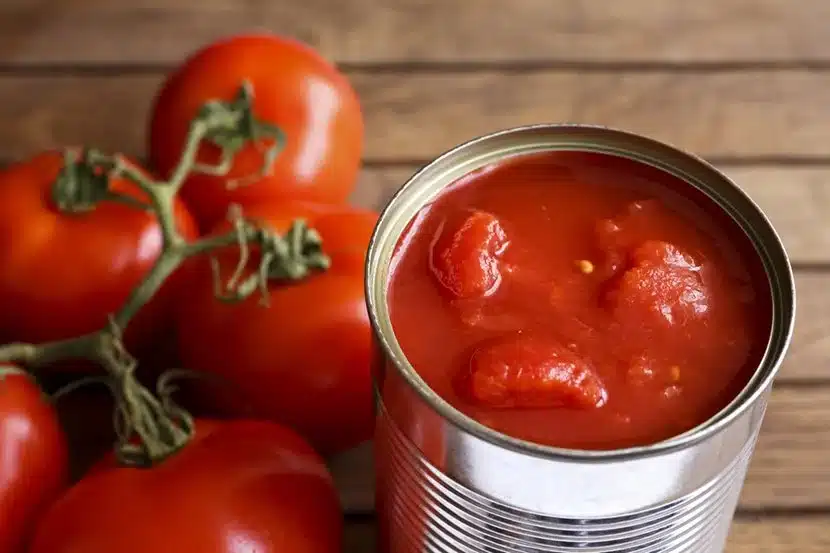
The differences of canned tomatoes are better for cooking because they react better under heat exposure. Because of their thicker texture, canned tomatoes are also a perfect substitute for tomato paste, making it possible to obtain the dish’s consistency and characteristic flavour.
However, as they are not as concentrated as the tomato paste, the substitution rate when using canned tomatoes instead of paste is two tablespoons of canned tomatoes for every tablespoon of tomato paste.
6. Sun-Dried Tomatoes
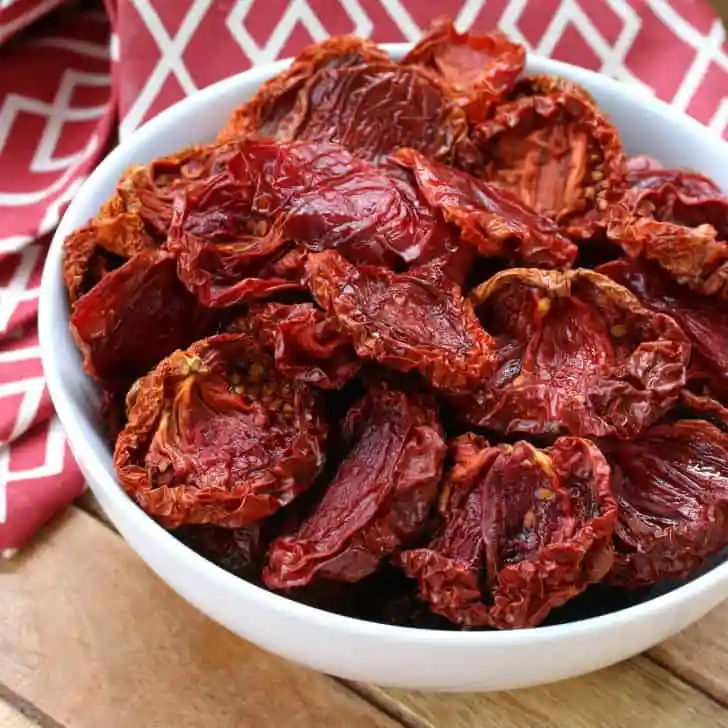
Some recipes use sun-dried tomatoes as a substitute for tomato paste. They have a concentrated tomato flavour and a thick, paste-like consistency. You can puree them with a bit of water to create a paste that can be used in recipes that call for tomato paste.
7. Ketchup
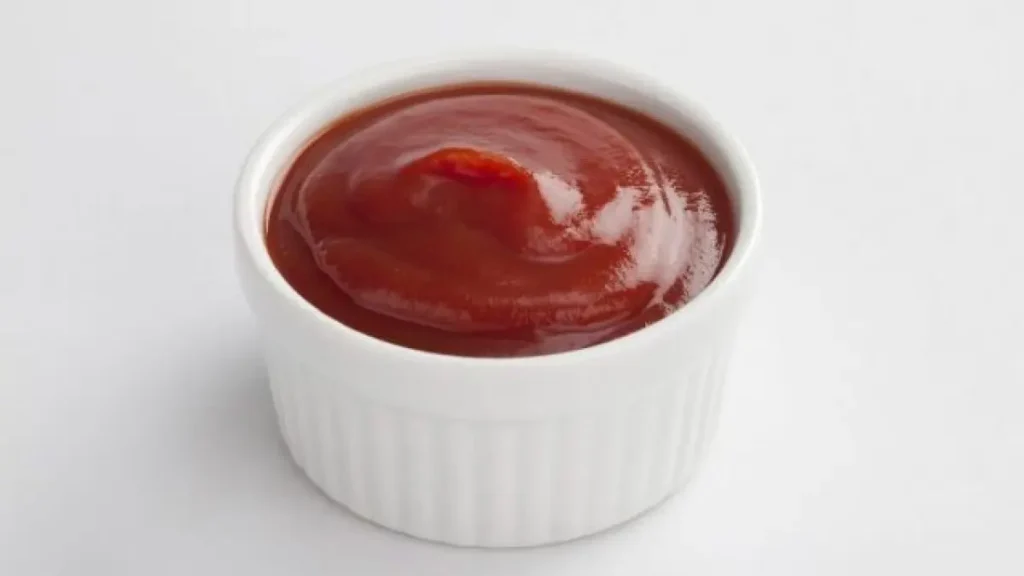
Ketchup can be used as a substitute for tomato paste in some recipes. It has a similar consistency and flavour and can be used in recipes that require a sweet tomato flavour. Remember that ketchup is sweeter than tomato paste, so you may need to adjust the other seasonings in your recipe to balance the sweetness.
The best tomato paste substitute for your recipe depends on the dish and your preferences.
READ ALSO:
- Chicken Legs Recipe Drumstick: How to make them
- Vegetable Soup Recipes: How To Cook the Nigerian Efo Riro
- How to Make Ofada Rice
How to use Tomato Paste Substitute
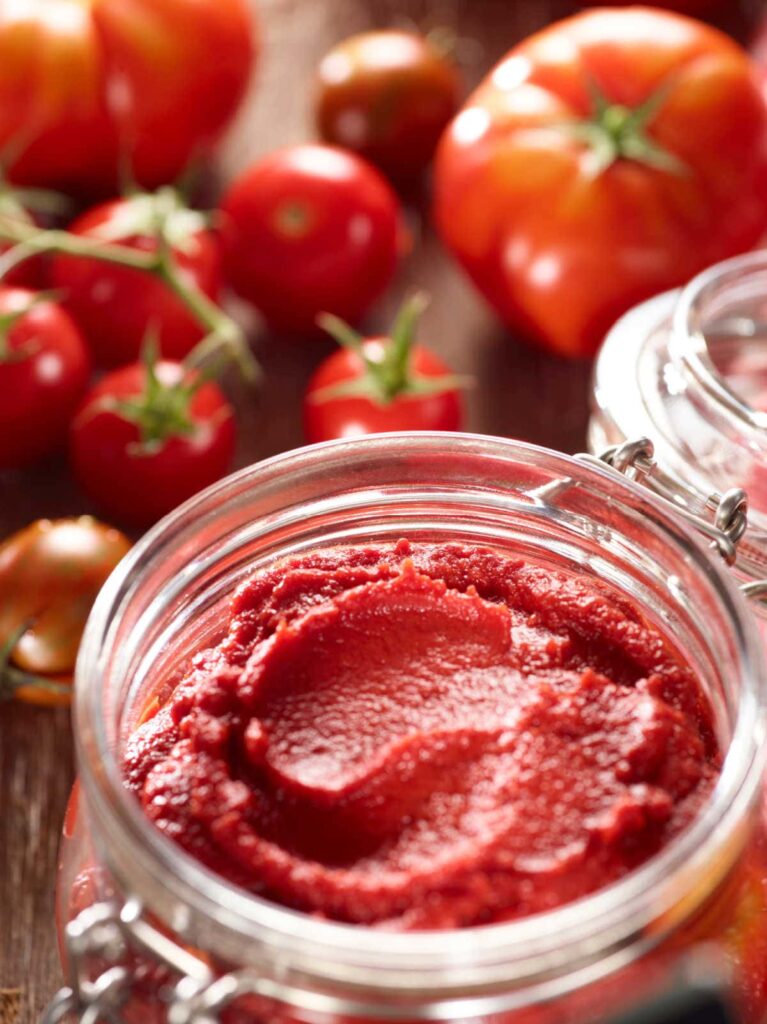
Tomato paste substitutes can be used in many recipes that call for tomato paste. Here are some ways to use them:
Start by using half the amount of the tomato paste substitute called for in the recipe, and adjust to taste.
1. Tomato sauce as a substitute
Cook it down in a saucepan over medium heat until it thickens and reduces by about half. This will help to concentrate the flavours and create a thicker consistency, more similar to tomato paste.
2. Canned Tomatoes as a substitute
Blend them in a blender or food processor until they reach a smooth consistency. You may need to strain the mixture to remove any large chunks or seeds.
3. Ketchup as a substitute
Mix it with a small amount of vinegar and sugar to create a more tomato-like flavour.
When using any tomato paste substitute, keep in mind that the flavour and consistency may be slightly different from using actual tomato paste. Adjust seasonings and other ingredients as necessary to balance the flavours.
Tomato paste substitutes can also be used as a base for marinades, salad dressings, and other sauces. Be creative and experiment with different combinations of flavours and ingredients.
How do you make tomato paste?
Ingredients
- 10 pounds tomatoes
- 2 tablespoons olive oil
- 2 teaspoons sea salt
- 1/2 teaspoon citric acid or 2 tablespoons bottled lemon juice
Equipment Needed
- Chef’s knife
- Cutting board
- Large pot
- Food mill, sieve, or chinois
- 2 rimmed baking sheets or 1 roasting pan
- 4-ounce jars for storing
Instructions
- Preheat the oven to 350°F. Arrange 2 racks to divide the oven into thirds and heat to 350°F.
- Chop tomatoes into quarters. Quarter the tomatoes.
- Simmer the tomatoes with olive oil. Place the olive oil in a large pot over medium-high heat until it shimmers. Add the tomatoes and cook until soft and the peels begin to detach from the tomato flesh.
- Pass the tomatoes through a food mill. Push the warm tomatoes through a food mill, sieve, or chinois to separate the tomato pulp from the seeds and skins.
- Stir the sea salt and citric acid or lemon juice into the pulp. Discard or compost the seeds and skins.
- Place the pulp on 2 baking sheets. Divide the tomato pulp between 2 large, rimmed baking sheets. You can also use a large roasting pan, but it will take longer to cook that way.
- Bake the tomato pulp until reduced to a paste. Place the baking sheets in the oven. Check the tomatoes every half hour, stirring the paste and switching the position of the baking sheets so that they reduce evenly.
- Over time, the paste will start to reduce to the point where it doesn’t fill the baking sheet anymore. At this point, combine the contents of the two baking sheets into one and continue to bake.
- Bake until reduced by more than half. The paste is done when shiny, brick-coloured, and reduced by more than half, 3 to 4 hours, though exact baking times will depend on the juiciness of your tomatoes. There shouldn’t be any remaining water or moisture separating from the paste at this point.
- Transfer the paste into jars. Divide the finished paste into 4-ounce jars, leaving 3/4-inch headspace.
Preserving Option 1
Process the tomato paste in a hot water bath. Apply lids and rings and process in a boiling water bath for 15 minutes. Keep in a cool, dark place for up to 1 year. After opening, refrigerate for up to 1 week.
Preserving Option 2
Refrigerate or freeze. If you don’t want to process the paste, you can refrigerate or freeze it instead. Scrape the finished paste into clean half or quarter-pint jars. Top each jar with a layer of olive oil and place in either the refrigerator or the freezer.
If you keep it well-covered with olive oil and ensure that you only use a very clean spoon to remove it from the jar, it will remain in the fridge for 3 to 4 weeks. Frozen, it will keep for up to 9 months.
READ ALSO:
Conclusion
In conclusion, tomato paste is a staple ingredient in many recipes, but if you don’t have it on hand, there are several tomato paste substitutes that you can use instead. Whether you choose to use tomato sauce, canned tomatoes, ketchup, or another substitute, it’s important to adjust the amount and other ingredients as necessary to ensure the flavours are balanced.
You can create delicious dishes even without tomato paste by following how to use them. So next time you run out of tomato paste, don’t panic—try out one of these substitutes and see how it enhances your recipe!
FAQs About Tomato Paste Substitute
Can I substitute ketchup for tomato paste?
Yes, ketchup makes a surprisingly adequate tomato paste alternative! Since ketchup is already quite concentrated, you can substitute from the bottle using a 1:1 ratio (if your recipe calls for one tablespoon of tomato paste, use one tablespoon of ketchup).
How can I use tomato paste if I don’t have tomato sauce?
If you have a can of tomato paste in your pantry, you are in luck—this is the best substitution for tomato sauce. All you need is tomato paste and water. Mix together 1 part tomato paste and 1 part water until well blended. Then, season your “sauce” to taste.
What does tomato paste do in a recipe?
Tomato paste can be used to intensify flavour over time in slow-cooked recipes or can quickly add a burst of flavour in quick 30-minute recipes for weeknights.
To get the most flavour potential out of your tomato paste, add it early in the cooking process before adding liquids like water, broth, or other canned tomatoes. This way, the tomatoes have the chance to caramelize and develop even further.
